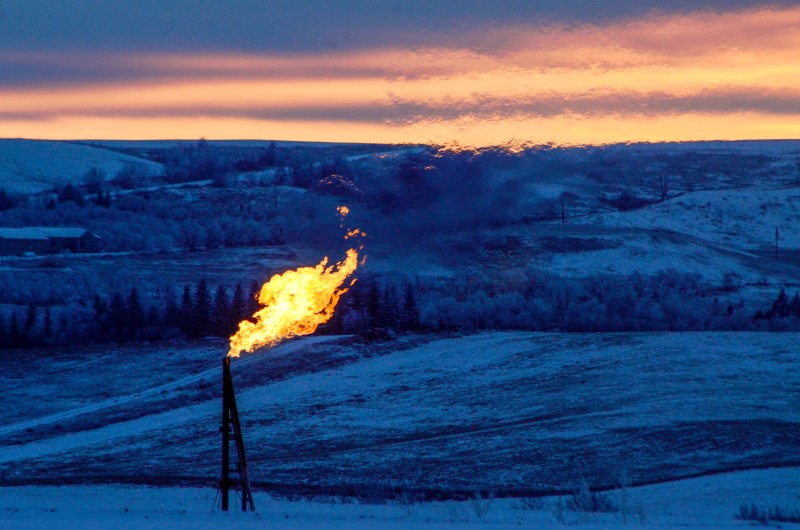Investing.com - U.S. natural gas futures were higher on Tuesday, bouncing back from its biggest one-day loss in almost two months as traders monitored shifting weather forecasts to assess the outlook for spring demand and supply levels.
U.S. natural gas for June delivery gained 2.7 cents, or around 0.9%, to $3.199 per million British thermal units by 8:45AM ET (12:45GMT).
Prices of the heating fuel sank 9.8 cents on Monday, the steepest daily loss since March 15.
Cool conditions are expected to linger over the northeastern U.S., although warming slightly mid-week before another weather systems with reinforcing cooling follows Friday through early next week, according to forecasters at NatGasWeather.com.
The central and southeastern U.S. will remain warm with highs of upper 70s to 80s, locally 90s. A weather system tracking across the Southwest toward Texas will bring showers, but still with mostly comfortable temperatures as highs reach the 60s and 70s.
Over the West, warm conditions will give way to cooling this weekend as Pacific systems return.
Overall, natural gas demand will remain stronger than normal, mainly driven primarily by the cooler than normal northeastern U.S.
Natural gas prices have closely tracked weather forecasts in recent weeks, as traders try to gauge the impact of shifting outlooks on spring demand.
Gas use typically hits a seasonal low with spring's mild temperatures, before warmer weather increases demand for gas-fired electricity generation to power air conditioning.
Nearly 50% of all U.S. households use gas for heating.
Meanwhile, market participants looked ahead to weekly storage data due on Thursday, which is expected to show a build in a range between 48 and 58 billion cubic feet in the week ended May 5.
That compares with a gain of 67 billion cubic feet in the preceding week, an increase of 68 billion a year earlier and a five-year average rise of 73 billion cubic feet.
Total natural gas in storage currently stands at 2.256 trillion cubic feet, according to the U.S. Energy Information Administration, 13.7% lower than levels at this time a year ago but 13.4% above the five-year average for this time of year.
